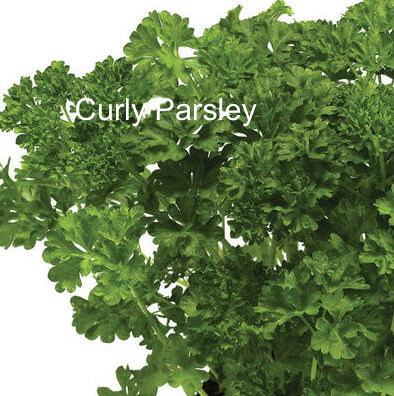
Curly Parsley: Must have kitchen herb
Curly parsley is generally uses in mediterranean food cooking.
SOWING:Transplant is highly recommended because you really don’t need a full tray of parsley for a home garden. But if you want to try to seed start they will do best in in 1″ cell containers. May need to be up-potted before time to plant outside so consider the time and room needed in your grow space. Seeds take at least 3 weeks to germinate.
Problems for Parsley: Most disease or fungus that affects parsley is due to soggy soil. Growing in a sunny location with a drip line is the best practice for most herbs as they do not require a lot of water at any one time.
BUTTERFLY FOOD:
Although NOT considered a pest the Eastern black Swallowtail worm stage is a prolific consumer of parsley plants. It can eat a small plant in a day or two. In N.Texas we are in the migration path of this butterfly, so it is customary to plant for your harvest as well as for the Swallowtail butterfly if possible. They eat fennel, dill and carrot tops as well.
LIGHT PREFERENCE: 6 to 8 hours of Sun.
SOIL REQUIREMENTS: Grows well in moist, fertile soil. If planted in a well-drained location, it can normally be wintered over to produce a crop early the following spring. Mulch where temperatures go below 0°F (-18°C). Water during dry spells and side-dress with compost or a balanced fertilizer once or twice during the growing period, if necessary.
Biennial Herb, which mean this plant will crow back a second year like a perennial, however it generally dies off after the second year. Some plants will grow a 3rd year but the flavor will diminish.
PLANT SPACING: 8-12″. Most home gardens will only need one or two parsley plants as they are used as flavoring in meals and not as whole plants.
HARVEST: Clip leaves when needed. Parsley can be used either fresh or dried. To dry, wash clipped leaves and spread out shallowly on screens in a warm, airy place. When thoroughly dry, rub and store in jars.

